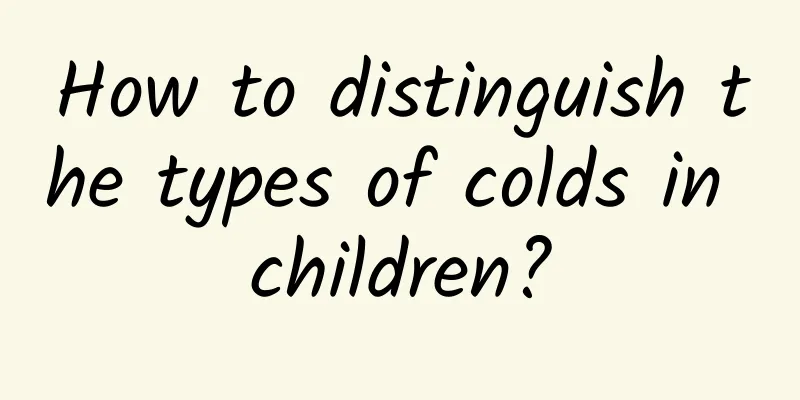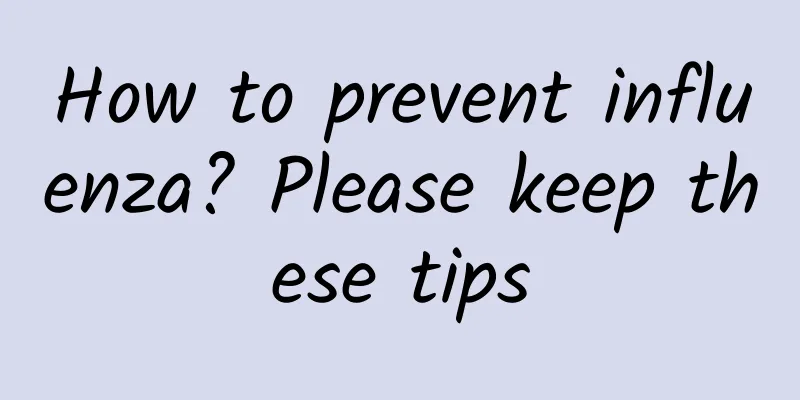How to distinguish the types of colds in children?

|
The weather has changed a lot recently, and many children and adults have caught colds. Some friends asked, "Every time I buy medicine, they ask if it's a cold or a wind-heat cold. If I go to the hospital, they will draw blood to test whether it's a virus or influenza?" With so many types, how can we distinguish them? In fact, the terms wind-cold and wind-heat belong to the concepts of traditional Chinese medicine, while viral and influenza belong to the concepts of Western medicine. Of course, you can also think that the former belongs to the concept of traditional medicine and the latter belongs to the concept of modern medicine. I am not familiar with the content of traditional Chinese medicine, so I will not go into the classification and causes of wind-cold and wind-heat here. Here I will mainly talk about the concept of cold in modern medicine. 01. Common cold in modern medicine According to modern medicine, cold is not a strict academic concept, it is more of a popular name. Generally speaking, the cold we refer to is caused by upper respiratory tract infection caused by bacteria, these symptoms include but are not limited to acute rhinitis, upper respiratory tract infection and the resulting symptoms such as nasal congestion, fever, runny nose, headache, cough and so on. Of course, there are many microorganisms that can cause this symptom. We generally divide them into two categories according to their inducing factors: common cold and influenza. The causes of the two are different, and the consequences are also different. The common cold is caused by an upper respiratory tract infection, and the symptoms are often mild, while the flu is clearly caused by the influenza virus, and the symptoms are more severe. In terms of the time of onset, the common cold occurs all year round, while the flu tends to appear in winter and spring and tends to be prevalent. Of course, there are many differences in the specific manifestations. The following picture simply summarizes the differences between colds and flu. I hope that parents can understand this, which is very necessary for making a scientific initial judgment on children's colds. After mastering the initial diagnosis of colds, parents can do triage like hospitals. If it is a common cold, then the general children's medicine can actually solve most of the problems, not to mention that the cold itself is a self-limiting disease (it will often recover on its own without treatment), so if it is not very serious, there is no need to go to the hospital. On the other hand, if it is influenza, it should be closely observed, the infection should be cut off, and special attention should be paid. If it is serious, go to the hospital for treatment in time. 02. Be cautious when using medication on children We have talked about the types of colds before, and everyone has a basic understanding of colds. On this basis, we need to further talk about the issue of cold medicine, especially for "children". As one of the most common diseases, since everyone has experienced colds, many parents unconsciously apply their own experience when facing their children's colds. Parents make judgments based on their own experience. However, this kind of "individual experience" sometimes has many problems, especially many families do not have children's cold medicines, so they give their children some adult cold medicines, which may lead to serious consequences. At this point, some people may ask, aren’t adult cold medicine and children’s cold medicine both cold medicine? Why do we need to distinguish them? This requires a specific discussion. 1. First of all, children's medication avoids some highly toxic ingredients Here we have to mention a basic concept of drugs: drug toxicity. Most drugs, especially those that kill microorganisms, are toxic (otherwise they would not kill the bacteria), which is why the saying "all drugs are three-point toxic" is widely circulated. Cold medicines are no exception. Common cold medicines contain many toxic ingredients, such as pseudoephedrine and other decongestant ingredients commonly used to relieve nasal congestion and runny nose, and dextromethorphan, which is commonly used to suppress coughs. These ingredients are still tolerable for adults, but they are not so friendly to children. For example, a study published in BMJ two years ago pointed out that some over-the-counter (OTC) cold medicines that can relieve nasal symptoms such as congestion, runny nose and sneezing may cause drowsiness and gastrointestinal discomfort in children, and in severe cases may even cause convulsions, rapid heart rate or even more serious consequences. Therefore, they are not recommended for children. In fact, many countries have made regulations on children's cold medicines. For example, the US FDA requires that antihistamine ingredients be banned for use in children under 2 years old and used with caution in children under 6 years old. The UK requires caution in the use of decongestants, antihistamines and antitussive expectorants in children. 2. Dosage is also a big problem Of course, the toxicity of drugs is not constant. You must remember a classic online slogan: "Talking about toxicity without considering the dosage is just hooliganism." There is a big gap between adults and children. It is not only the intuitive differences in weight and height, but also the huge difference in development. Children are still in a period of rapid development. The maturity of various organs in their bodies is not yet high, and their own resistance is lower. In this case, children are more sensitive to drugs and more vulnerable to harm. This is why there are special children's medicines for children. In fact, accurate dosage is very important for children, but many traditional cold medicines ignore this point. They only come in a packet or a board, leaving parents at a loss as to how much to use. However, now more and more children's cold medicines are becoming more and more refined, making it easier for parents to use them more accurately. 3. The taste should also be kid-friendly I believe that everyone has had the fear of bitter and unpalatable medicines when they were young. Although parents repeatedly persuaded us that "good medicine tastes bitter but is good for the disease", this bad taste really left a very bad impression. We are like this, and children are no exception. In this case, letting children take medicine has become a difficult matter for many parents. Children's medicines often add some additives to cover up the bitter taste of the medicine, thereby reducing children's resistance to the medicine. 03. Take colds seriously It is now the end of October, and we are in the period of seasonal changes. The weather is hot and cold. In this case, it is the peak period for colds, and influenza often rages during this period. At this time, we must pay attention to colds, protect children in daily life, and try to prevent them as much as possible. However, once a cold occurs, it should be taken seriously. Although the cold is a common disease, if the cold is not treated in time, especially if it is misdiagnosed, it may cause serious consequences such as lung infection. (Therefore, if a child has a cold for too long or the symptoms are severe, he must go to the hospital for diagnosis and treatment in time. |
<<: Do you know the common misunderstandings about stroke rehabilitation?
>>: The Rehabilitation Department is fighting against your illness
Recommend
Why does the vulva hurt after menstruation?
The menstrual period is very important for women....
Causes of abdominal distension after abortion
Nowadays, female friends always don’t pay attenti...
Can you lose weight by taking slimming pills without dieting or exercising? If you want to lose weight, you should also consider safety
Rumors If you don’t lose weight in March, you wil...
Can I eat snow peas during confinement?
In daily life, many people like to eat green bean...
Brown discharge on the tenth day after transplantation
When an organ in our body becomes diseased and ha...
Can “Spring Fasting” help you lose weight healthily?
Recently, there have been a lot of "spring w...
A few bars indicate pregnancy
There are many ways and tools for women to test f...
Fallopian tube paramesonephric duct cyst
For women, the fallopian tube is an extremely imp...
Is it normal to have your period five or six days early?
Under normal circumstances, women have their mens...
Precautions for taking calcium tablets during confinement
Pregnant women need to take a confinement month a...
Foods that protect the uterus
Everyone has their own lifestyle. Often some smar...
What is the cause of seborrheic dermatitis on the scalp of girls?
Some girls find that they have more dandruff when...
What to do if your stool is dry and you can't pass it during confinement
When many female friends are in confinement after...
Who is suitable for practicing Ba Duan Jin? Is Ba Duan Jin suitable for girls?
Ba Duan Jin is an independent and complete set of...
What are the reasons for female infertility?
Every family hopes that their children are health...









